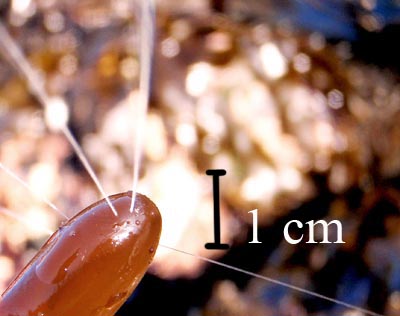Halosaccion glandiforme is a saccate alga with a short stipe and discoid holdfast. It is commonly referred to as the “sea sac.” It has a relatively thin thallus that forms an ellipsoidal, seawater-filled structure.
Its coloring can range from greenish-brown to reddish purple. Over the course of a year, it will typically grow to a length of 10-20cm (Johnson 1994).
One of the more interesting quirks of the morphology of H. glandiforme is that its sac-like structures possess approximately 5-15 pores located towards the distal end (Vogel & Loudon 1985). When the sac is full of water and is physically compressed, several streams of water will go shooting outwards which, while not a common occurrence when H. glandiforme is left to its own devices, is nonetheless highly entertaining to watch.

Microscopic view showing inner surface of thallus.
References
Johnson LE. 1994. Enhanced settlement on microtopographical high points by the intertidal red alga Halosaccion glandiforme. Limnology and Oceanography. 39: 1893-1902.
Vogel, S and C Loudon. 1985. Fluid mechanics of the thallus of an intertidal red alga, Halosaccion glandiforme. The Biological Bulletin. 168: 161-174.
|



